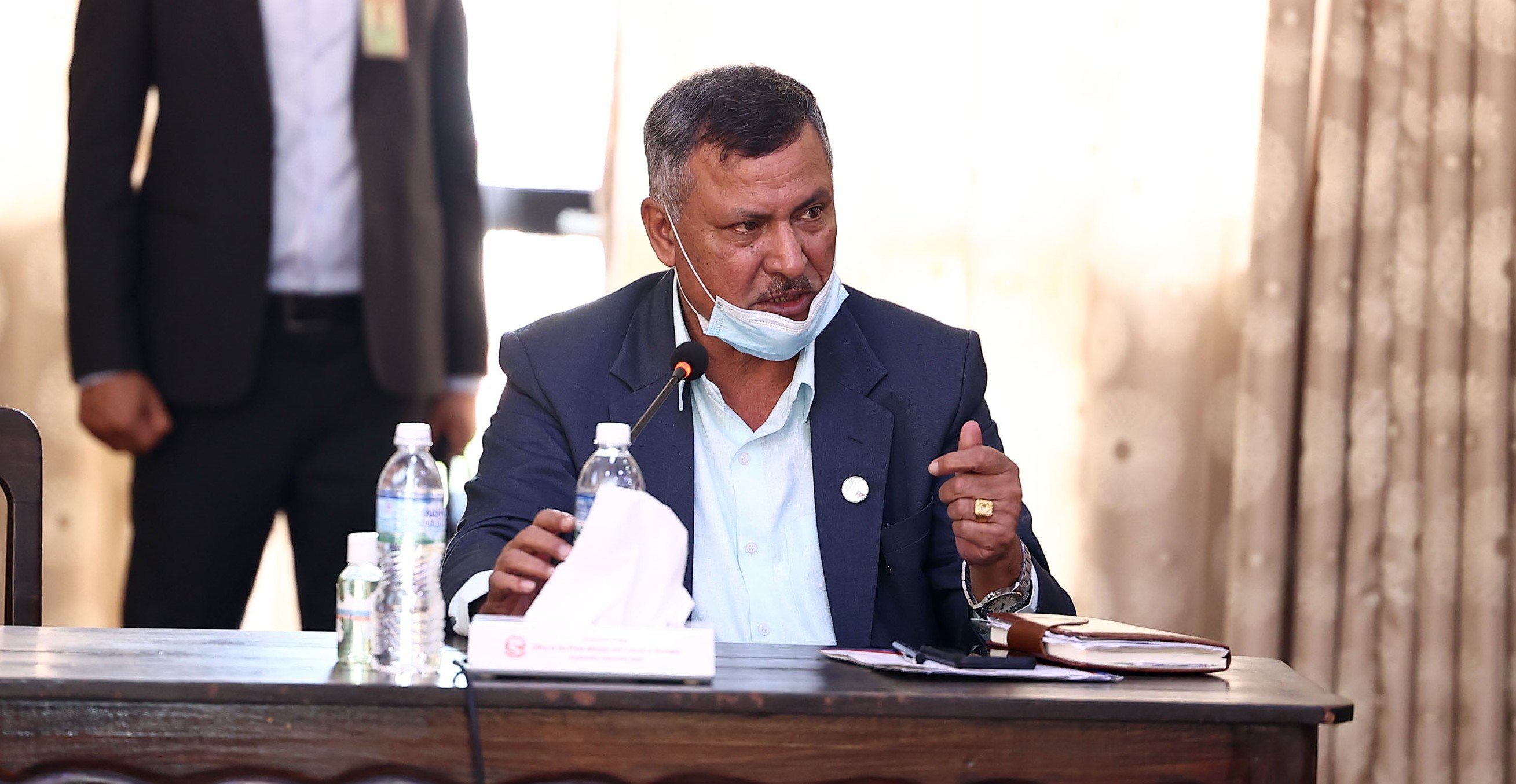Govt to expand eye care section in district hospitals

By A Staff Reporter
Kathmandu, Mar. 28: Minister for Health and Population Birodh Khatiwada has urged that every district hospital should establish an eye care section.
Speaking at a programme organised on the occasion of the 44th Anniversary of Nepal Netra Jyoti Sangh (NNJS) here on Sunday, Minister Khatiwada said that it was effective to provide eye service from the district hospitals.
“It will be effective to provide various services from the same hospital,” said Minister Khatiwada.
Minister Khatiwada also asked the local levels to allocate budget for eye health. “No any eye health programme should be halted in lack of budget,” said Minister Khatiwada.
“Local, provincial and central level governments should coordinate and work on eye health.”
NNJS has been providing comprehensive eye care services coordinating with the local level, said Khatiwada and asked to continue such collaboration with other local levels as well.
The government is planning to expand eye care hospitals, said Minister Khatiwada.
Speaking on the occasion, Dr. Roshan Pokharel, secretary at the Ministry of Health and Population, informed that an eye section would be established at each district hospital.
Bharat Bahadur Chand, general secretary of NNJS, said that due to the Vitamin-A administration programme, blindness and child mortality rate have decreased.
“NNJS is working to make eye health services available to the largest number of people and ensure that no one should live with blindness in lack of money and accessibility,” said Chand.
An estimated 130,000 persons are blind in one or both eyes due to age-related cataract representing almost two thirds of causes of blindness.
According to NNJS, an estimated 1,012,014 children aged below 16 years and 3,716,970 people aged over 35 years need presbyopic glasses. There are an estimated 30,240 blind children in Nepal and three times as many (90,000) children have low vision.
Similarly, 100,000 people of 30 years and older have glaucoma and three times as many (300,000) are glaucoma suspects and are at risk of developing glaucoma. About 230,000 people of all ages are reported to have low vision in Nepal.
On the occasion, NNJS felicitated Gandaki Province, Tulasipur Sub-Metropolitan City of Dang, social worker Shree Jung Shah, Biratnagar Hospital and Bharatpur eye hospital.
Recent News

Do not make expressions casting dout on election: EC
14 Apr, 2022
CM Bhatta says may New Year 2079 BS inspire positive thinking
14 Apr, 2022
Three new cases, 44 recoveries in 24 hours
14 Apr, 2022
689 climbers of 84 teams so far acquire permits for climbing various peaks this spring season
14 Apr, 2022
How the rising cost of living crisis is impacting Nepal
14 Apr, 2022
US military confirms an interstellar meteor collided with Earth
14 Apr, 2022
Valneva Covid vaccine approved for use in UK
14 Apr, 2022
Chair Prachanda highlights need of unity among Maoist, Communist forces
14 Apr, 2022
Ranbir Kapoor and Alia Bhatt: Bollywood toasts star couple on wedding
14 Apr, 2022
President Bhandari confers decorations (Photo Feature)
14 Apr, 2022











